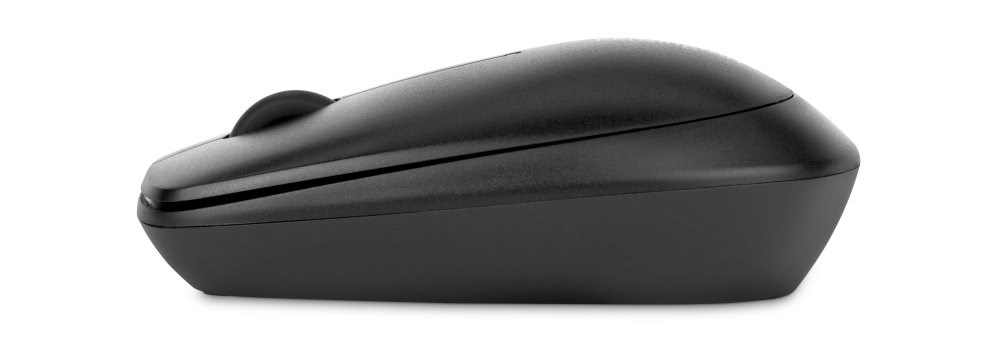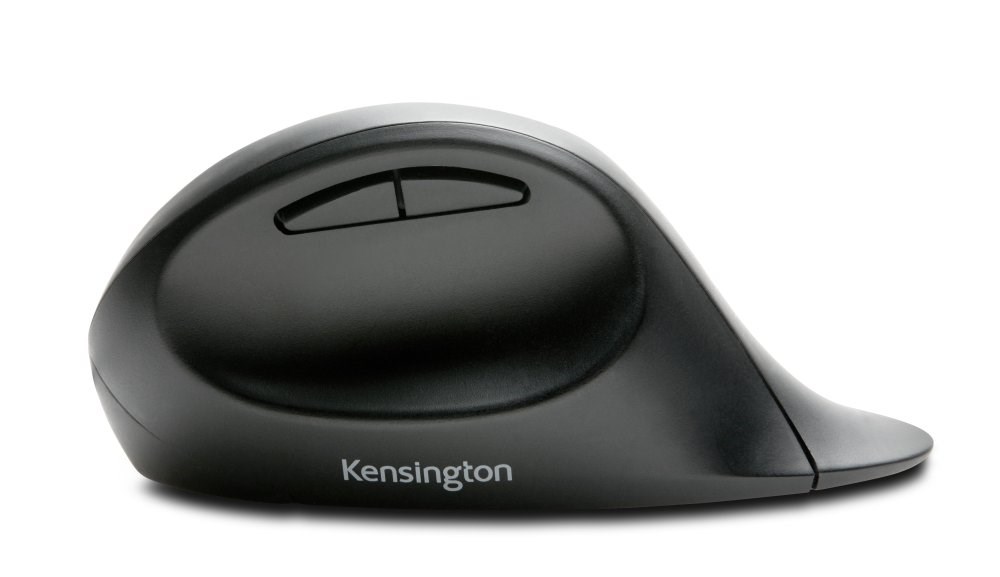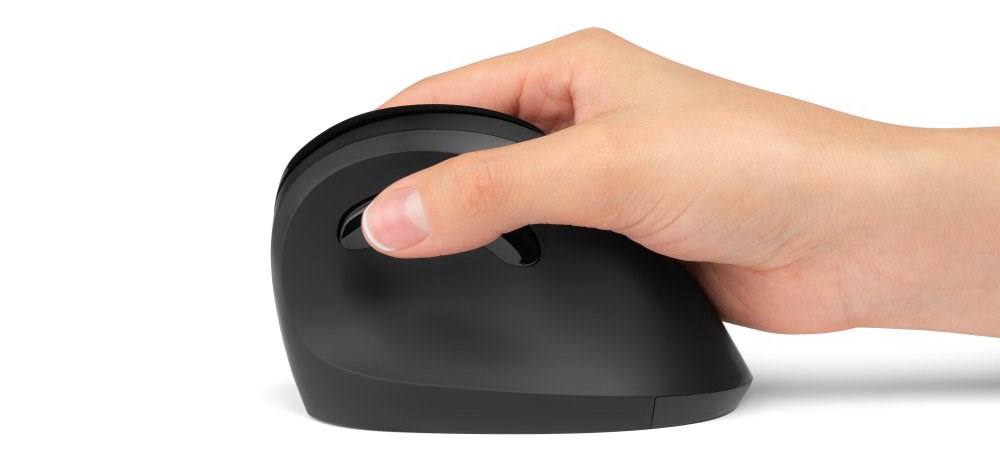
The mouse is the unsung hero of modern-day computing. The graphical user interface (GUI) is what ultimately brought computers to the mainstream. A mouse was the only way to navigate GUIs for a long time, and it’s still among the best input methods today.
A mouse can also relieve strain on your carpal tunnel, which connects the nerves in your hands to the rest of your body. Replacing a laptop’s built-in trackpad with a mouse, for example, goes a long way in preventing carpal tunnel syndrome.
Mice help gamers win tournaments, keep students learning, and make workers productive around the globe.
Yet, when you think of computer upgrades, the mouse is often the last piece you consider upgrading. It’s a mistake to think all mice are created equal – just like you have a unique body, every mouse in Kensington’s lineup is uniquely designed to accommodate different people.
This is the complete guide to mouse shopping, which will walk you through everything you need to know to find the perfect mouse for your needs.
What to Look for in a Mouse
There’s more to different mice models than price.
Mice come in a variety of sizes and shapes, and each has its own capabilities. A two-button mouse with a scroll wheel is standard, while Kensington often adds power-user functionality for more control. They also have different connectivity options.
A mouse can be wired, wireless, or both. Wired mice connect through a USB cable, while wireless mice connect either through Bluetooth® or 2.4 GHz, using either a USB dongle or the computer’s built-in Bluetooth support. Available ports and connections make a difference in the type of mouse you choose.
Mechanical ball mice are no longer used, as optical and laser mice are king these days. An optical mouse uses LED to track movements, while a laser mouse uses, well, a laser. Each can accommodate different dots-per-inch (DPI) settings to slow down or speed up movement. Often this is factory set, but some models allow customization.
So which mouse works best for which situation?
Traveling Professionals Need a Mobile Mouse
The U.S. Bureau of Transportation Statistics reports Americans make over 405 million long-distance business trips each year. It accounts for 16% of all long-distance travel, and you want to travel light. The last thing you need while traveling is a huge mouse taking up space in your luggage.
Traveling without a mouse isn’t the answer. You need a mobile mouse that connects to your mobile gear.

Kensington’s Pro Fit® Bluetooth® Mobile Mouse — Black easily connects to ultra-thin devices like Ultrabooks™ and Chromebooks™. Its comfortable, mobile design fits both right- and left-handed users, while its 1000 DPI high-definition laser tracks mouse movement with accuracy.
Those using a laptop with a USB port will love the Pro Fit® Wireless Mobile Mouse — Black. It provides the same 1000 DPI sensor, ambidextrous design, and plug and play installation using a secure 2.4 GHz wireless connection.
Younger Students Need a Compact Mouse
K-12 students are still growing. They don’t have full-sized adult hands, so full-size mice can ruin their ergonomics. This doesn’t mean kids can’t use computers – in fact, Kensington makes mice in all sizes because access to technology shouldn’t have an age limit.
The Pro Fit® Mobile Retractable Mouse is an optical mouse with a retractable cable. It provides the same two-button and scroll-wheel capability in a small form-factor for young students. The retractable cord makes a desktop less cluttered while providing the reliability of a corded mouse.
Kensington’s Pro Fit® Wired Mid-Size Mouse USB has a mid-sized, right-handed design. It adds dedicated forward and backward buttons. It’s also spill- and drop-resistant to withstand any abuse younger students can throw at it.
Office Workers and Teachers Need a Desktop Mouse
Working in a cubicle, office, or classroom requires a professional-level mouse. It needs to support your hand for overall body health while improving productivity. Clicking and scrolling through your job is made easier with a full-sized desktop mouse.
Kensington’s Pro Fit® Full-Size Wireless Mouse provides ergonomics for right-handed users. It’s plug and play through a 2.4 GHz wireless connection and the high-definition optical sensor accommodates 800, 1200, and 1600 DPI. Dedicated forward/back buttons add another level of productivity.

The Pro Fit® Ergo Wireless Mouse has dual wireless (2.4 GHz and Bluetooth® 4.0 LE) with 128-bit AES encryption. Five buttons, three DPI settings (800/1200/1600), and five buttons (including forward/back) make it a desktop powerhouse.
Gamers and Designers Need a Powerful Mouse
Gamers and designers have unique computing needs. Not only do monitors have and graphics cards need to be up-to-par, but cursor speed is a major consideration. Designers need lower DPI to slow down cursors for precision, while gamers need higher DPI for quick in-game reactions. Kensington provides several mice with customizable DPI settings and expert-level control.
Kensington’s Pro Fit® Full-Size Mouse USB is designed for right-handed ergonomics with a comfort grip. Its high-definition optical sensor can be adjusted up to 3200 DPI, and the pointer speed quick-select button makes changing and adjusting on the fly easy. A solid USB connection delivers plug and play with no driver installation needed.

Meanwhile, the Pro Fit® Ergo Vertical Wireless Mouse is the ultimate in both comfort and control. It’s contoured at a 46.7-degree slope that positions your wrist in a neutral handshake position. The six-button design accommodates scroll wheel, left, right, forward, back, and DPI settings. It’s adjustable to 800, 1000, 1200, and 1600 DPI, so you’ll have the right setting for any project.
These mice aren’t just limited to the uses described above. They’re examples used to illustrate different scenarios you work in. Plenty of other use-case scenarios exist – this list is just getting you started thinking down the right path.
Don’t Stop at the Mouse
Your mouse isn’t the last upgrade to make – it’s the first. Once you feel the extra control, you’ll find yourself optimizing your productivity every step of the way. For those of you who want something a little different, don’t forget our fill line of trackballs for another ergonomic solution.
Ergonomic solutions turn your workstation into a healthier environment, promoting good posture and work habits. Docking solutions expand the power of your computing equipment, adding ports and turbocharging performance.
Don’t forget security solutions to keep devices safe while traveling. A mobile mouse can’t help you navigate a stolen computer. Kensington’s industry-leading security solutions cover both the physical and digital realm for full 360-degree protection.
Your mouse gives you unprecedented control over your computer. Use it to extend that control over the rest of your life.
Take back your control using your favorite from Kensington’s full lineup of mice. Also, check out the full range of electronic control solutions, including keyboards and trackballs.